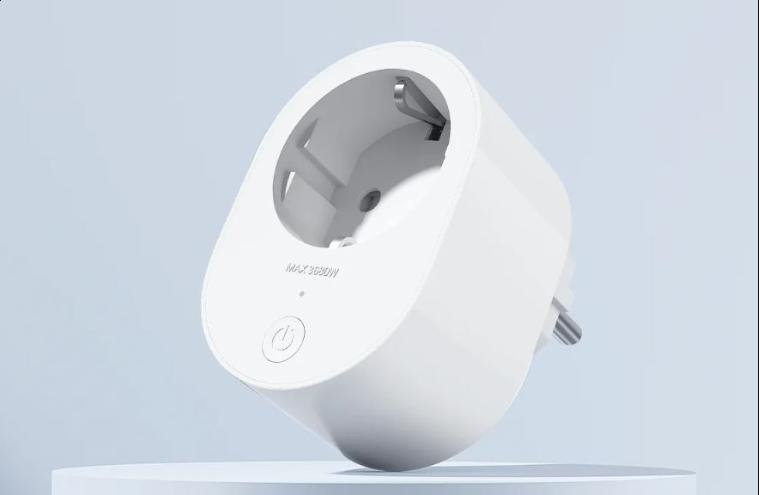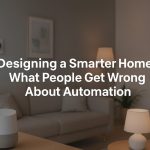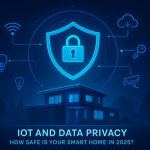Smart home technology has rapidly evolved, offering users convenience, energy savings, and automation. While high-tech devices like smart speakers, thermostats, and security cameras often steal the spotlight, smart plugs provide one of the easiest and most affordable ways to upgrade your home.
But what exactly are smart plugs, and why should you consider using them? In this article, we’ll cover:
✅ What smart plugs are and how they work
✅ The benefits of using smart plugs
✅ How to set them up and integrate them into your smart home
✅ The best use cases for smart plugs
✅ Potential drawbacks and considerations
What Are Smart Plugs and How Do They Work?
A smart plug is a small device that plugs into a standard electrical outlet, allowing you to control whatever is plugged into it remotely via an app or voice assistant.

Think of it as a Wi-Fi-enabled switch—you can turn devices on and off, schedule automation, and even monitor energy usage from anywhere.
🔹 How They Work:
1️⃣ Plug the smart plug into an electrical outlet.
2️⃣ Connect it to your Wi-Fi network via the manufacturer’s app.
3️⃣ Plug a standard device (lamp, fan, coffee maker, etc.) into the smart plug.
4️⃣ Control the device remotely using a smartphone app, voice assistant (Alexa, Google Assistant, Siri), or set up automation.
Smart plugs are perfect for turning “dumb” appliances into smart ones without replacing them.
Why Should You Use Smart Plugs?
Smart plugs are a small investment with big benefits. Here’s why they’re worth considering:
1. Convenience & Remote Control
✅ Forgot to turn off a lamp before leaving home? Switch it off from your phone.
✅ Want your coffee ready when you wake up? Set it to turn on automatically.
✅ Too tired to get out of bed to turn off a fan? Control it with voice commands.
Smart plugs eliminate the need to manually turn devices on and off, making life more convenient.
2. Energy Efficiency & Cost Savings
Many smart plugs track energy usage, helping you identify which devices consume the most electricity.
🔹 Example: If your space heater is running longer than necessary, you can set it to shut off automatically to prevent energy waste.
Some models also include smart scheduling, so you don’t accidentally leave devices running all day.
3. Home Automation & Smart Home Integration
Smart plugs can be linked to other smart home devices to create automation routines.
🔹 Example:
✔ Morning Routine – Have your coffee maker turn on and bedroom lights gradually brighten.
✔ Away Mode – Randomly turn lights on and off to make it seem like someone is home.
✔ Night Mode – Turn off all unnecessary electronics with a single voice command.
4. Safety & Fire Prevention
Leaving appliances plugged in can be a fire hazard—especially space heaters, irons, and curling irons. With a smart plug, you can set automatic shut-offs or turn them off remotely.
Many smart plugs also have overload protection, cutting power if an appliance overheats.
Best Ways to Use Smart Plugs
While you can use a smart plug with almost any device, here are some of the best applications:
🏡 Home & Lifestyle
✔ Lamps & Lights – Control them remotely or schedule them for automated lighting.
✔ Coffee Makers – Have your coffee brewed before you even step into the kitchen.
✔ Fans & Heaters – Adjust temperature settings based on time of day or presence.
🎮 Entertainment & Electronics
✔ TVs & Gaming Consoles – Automatically power them down at night to save electricity.
✔ Speakers & Sound Systems – Sync with routines for a wake-up alarm or sleep mode.
🔌 Energy-Hungry Appliances
✔ Air Conditioners – Turn them on before you get home to cool your space efficiently.
✔ Washing Machines & Dryers – Automate cycles to take advantage of off-peak energy rates.
🛡️ Security & Safety
✔ Outdoor Holiday Lights – Schedule decorations to turn on at sunset and off at bedtime.
✔ Motion Sensors & Cameras – Power them on only when needed.
✔ Iron & Hair Tools – Prevent overheating by ensuring they turn off after use.
How to Set Up a Smart Plug
Installing a smart plug is incredibly simple. Here’s a step-by-step guide:
1️⃣ Plug it in – Insert the smart plug into a wall outlet.
2️⃣ Download the app – Most brands require their own app (TP-Link’s Kasa, Wyze, Wemo, etc.).
3️⃣ Connect to Wi-Fi – Follow the in-app instructions to pair the plug with your home network.
4️⃣ Name your plug – Example: “Living Room Lamp” or “Coffee Maker.”
5️⃣ Integrate with voice assistants – If supported, link to Alexa, Google Assistant, or Apple HomeKit.
6️⃣ Set schedules or automation – Customize settings based on your routine.
Once set up, you can control your devices remotely or through voice commands.
Potential Downsides of Smart Plugs
While smart plugs offer many benefits, they do have some limitations:
🔹 Wi-Fi Dependence – If your internet goes down, remote control features won’t work.
🔹 Compatibility Issues – Not all smart plugs work with every smart home ecosystem (check for Alexa, Google Assistant, or Apple HomeKit support).
🔹 Limited Power Handling – High-powered appliances like ovens or refrigerators may require specialized smart plugs with higher wattage capacity.
🔹 Potential Security Risks – Like any IoT device, smart plugs can be vulnerable to hacking if not secured properly (use strong passwords and firmware updates).
Despite these drawbacks, smart plugs remain one of the easiest and most affordable ways to enter the smart home world.
Best Smart Plugs to Consider
If you’re looking to buy a smart plug, here are some of the top-rated options:
🔹 TP-Link Kasa Smart Plug – Works with Alexa & Google Assistant, energy monitoring included.
🔹 Amazon Smart Plug – Best for Alexa users, simple setup, reliable performance.
🔹 Wemo Mini Smart Plug – Compact design, integrates with Apple HomeKit.
🔹 Wyze Smart Plug – Budget-friendly, easy setup, works with schedules.
When choosing a smart plug, consider:
✔ Voice assistant compatibility (Alexa, Google Assistant, Siri)
✔ Energy monitoring features
✔ Scheduling & automation options
✔ Size & outlet space requirements
Final Thoughts
Smart plugs may seem like a small upgrade, but they offer big advantages when it comes to convenience, automation, and energy savings. Whether you want to remotely control your devices, reduce electricity costs, or improve home security, smart plugs provide an affordable and easy way to make your home smarter.
As smart home technology continues to evolve, smart plugs will likely become an essential part of modern living—proving that sometimes, the simplest solutions make the biggest impact.
💡 Would you upgrade your home with smart plugs? Let us know how you’d use them!
- Designing a Smarter Home in 2026: What People Get Wrong About Automation
 Smart homes were once science fiction, but today they’re a reality in millions of households. With voice assistants, smart plugs, and automated lighting systems, it’s easy to assume home automation is simply a matter of plugging in a few devices. Yet, many homeowners quickly discover that “smart” doesn’t always mean simple. In this article, we’ll…
Smart homes were once science fiction, but today they’re a reality in millions of households. With voice assistants, smart plugs, and automated lighting systems, it’s easy to assume home automation is simply a matter of plugging in a few devices. Yet, many homeowners quickly discover that “smart” doesn’t always mean simple. In this article, we’ll… - Automated Online Trading: How IoT is Redefining Financial Markets
 Introduction automated online trading In a world where milliseconds can decide millions, the fusion of Internet of Things (IoT) technology and automated online trading is reshaping global finance. What once relied solely on human judgment now increasingly depends on connected machines, real-time data, and predictive algorithms. From weather sensors influencing agricultural trades to smart logistics…
Introduction automated online trading In a world where milliseconds can decide millions, the fusion of Internet of Things (IoT) technology and automated online trading is reshaping global finance. What once relied solely on human judgment now increasingly depends on connected machines, real-time data, and predictive algorithms. From weather sensors influencing agricultural trades to smart logistics… - The Role of Linux in IoT: Powering the Connected World
 The Internet of Things (IoT) is everywhere—from smart homes and wearable devices to industrial automation and self-driving cars. Behind the scenes, one operating system plays a surprisingly dominant role: Linux. Known for its stability, flexibility, and open-source nature, Linux has become the backbone of countless IoT devices and platforms. But what makes Linux so well-suited…
The Internet of Things (IoT) is everywhere—from smart homes and wearable devices to industrial automation and self-driving cars. Behind the scenes, one operating system plays a surprisingly dominant role: Linux. Known for its stability, flexibility, and open-source nature, Linux has become the backbone of countless IoT devices and platforms. But what makes Linux so well-suited… - The Smart Home Revolution in 2025: How IoT is Transforming Everyday Living
 In the past decade, the vision of a truly smart home has moved from futuristic fantasy to everyday reality. As we step into 2025, the Internet of Things (IoT) has matured into a robust ecosystem, connecting appliances, security systems, lighting, and even entertainment devices under one seamless digital roof. The result? Homes that are safer,…
In the past decade, the vision of a truly smart home has moved from futuristic fantasy to everyday reality. As we step into 2025, the Internet of Things (IoT) has matured into a robust ecosystem, connecting appliances, security systems, lighting, and even entertainment devices under one seamless digital roof. The result? Homes that are safer,… - IoT and Data Privacy: How Safe Is Your Smart Home in 2025? – IoT Security
 The smart home revolution has made everyday life more convenient than ever. From voice assistants that control the lights to security cameras that send alerts directly to your phone, connected devices have become part of our daily routines. But with this convenience comes an important question: how safe is your personal data in a world…
The smart home revolution has made everyday life more convenient than ever. From voice assistants that control the lights to security cameras that send alerts directly to your phone, connected devices have become part of our daily routines. But with this convenience comes an important question: how safe is your personal data in a world…







